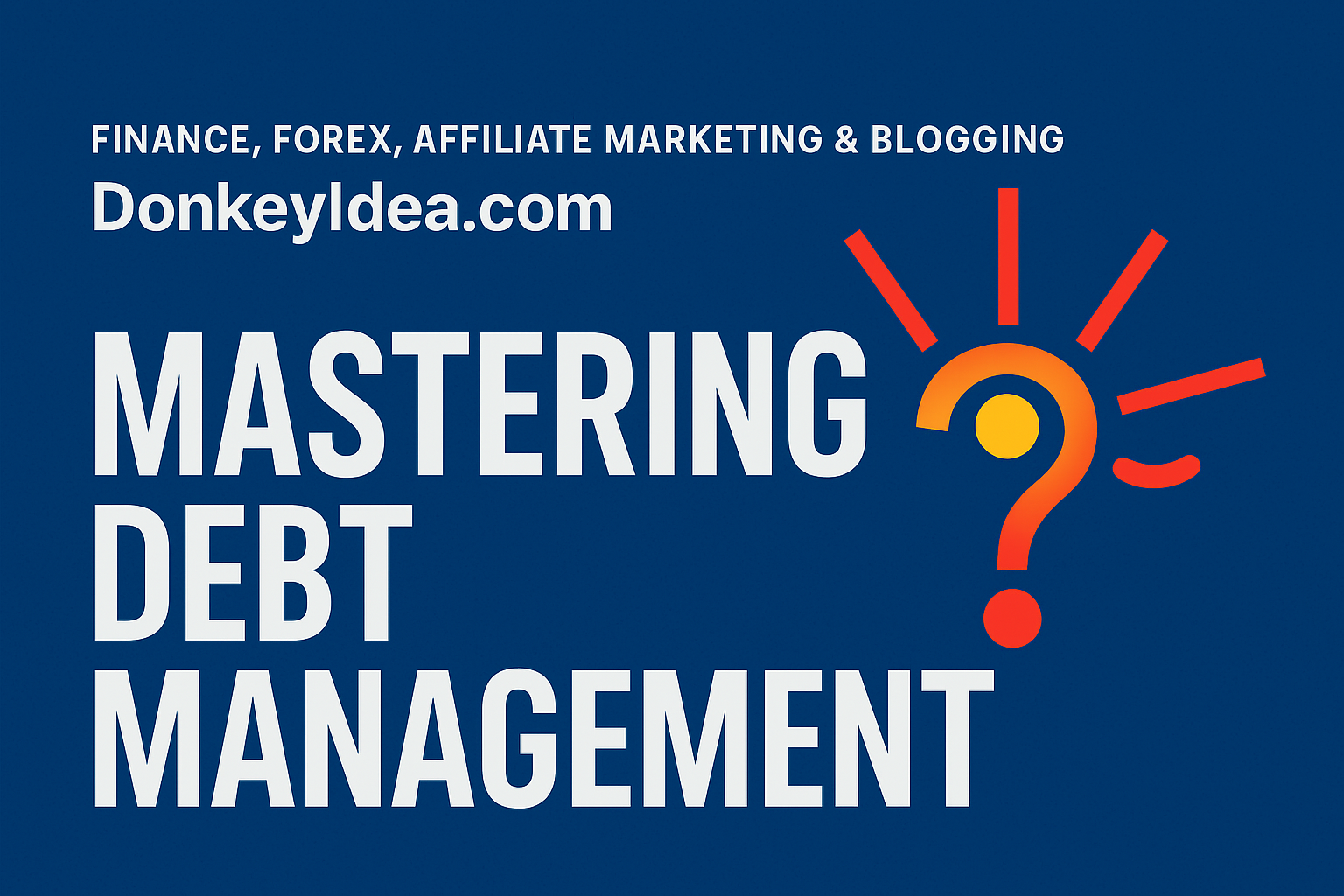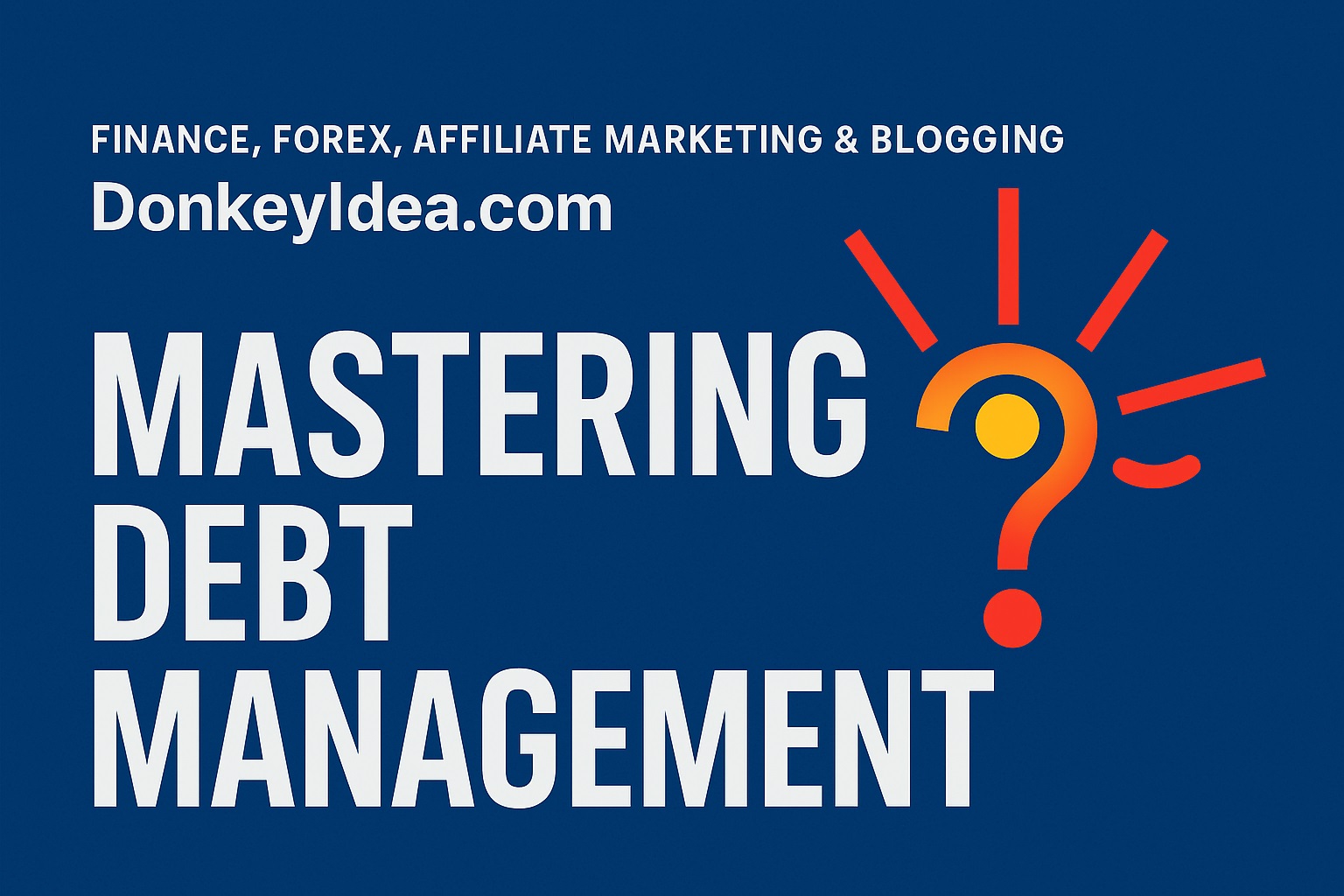Getting out of credit card debt can feel like climbing a mountain. It’s tough, but with the right steps to get out of credit card debt fast, you can reach the summit. Many people find themselves in debt due to unexpected expenses or poor financial planning. But don’t worry, you’re not alone. Understanding how to tackle this problem is the first step towards recovery.
Financial planning is crucial. It helps you track your spending and manage your money better, so you can avoid falling back into debt. By applying these simple steps to get out of credit card debt fast, you can take control of your finances and build a brighter future.
One way to manage your loans effectively is through specialized tools. For instance, using a Loan Management Software can help you keep your debts organized and make payments on time.
In This Post, You’ll Learn:
- How to create a realistic budget you can stick to
- Where your hidden spending leaks are
- Tools that make money management easy
Create a Zero-Based Budget
What it is: A zero-based budget means every dollar you earn is assigned a job. You plan how to spend, save, or invest every cent.
Why it works: This method helps you see exactly where your money goes, making it easier to cut unnecessary expenses.
How to do it: Start by listing all your income sources. Next, write down all your expenses, including bills and daily spending. Adjust the numbers until your budget balances to zero.
Pro Tip: Review your budget monthly; life changes and so should your budget.
Automate Your Savings
Why this helps: Automating savings means you save money without even thinking about it. It helps you stay disciplined.
How to set it up: Set up an automatic transfer from your checking account to your savings account every payday. Start with a small amount, then gradually increase it.
Negotiate Your Interest Rates
What it is: Contact your credit card company and ask for a lower interest rate.
Why it matters: A lower rate means you pay less interest, which helps you pay off your debt faster.
How to apply it: Prepare your case with your payment history and loyalty to the bank. Call them and politely ask for a better rate.
Bonus Tip: Be ready to switch to another card if they refuse.
Create a Debt Payoff Strategy
Creating a debt payoff strategy is essential to tackling your credit card debt. To create a debt payoff strategy that works for you, start by listing all your debts, interest rates, and minimum payments. Decide whether to use the snowball or avalanche method for repayments.
Mini Case Study
When I started tracking every expense, I realized I was spending too much on coffee and takeout. By cutting back, I was able to put more money towards my credit card payments. It was a simple change, but it made a big difference!
Frequently Asked Questions
1. How can I quickly reduce my credit card debt?
Start by creating a budget and cutting unnecessary expenses. Use the savings to pay more on your credit card. Consider consolidating your debts into a lower-interest loan.
2. Is it better to pay off the smallest debt first?
This is known as the snowball method. Paying off smaller debts first can motivate you to tackle the larger ones. It’s about what works best for you.
3. Should I close my credit card accounts after paying them off?
Closing accounts can hurt your credit score. Instead, keep them open but don’t use them. This keeps your credit utilization low.
4. What if I can’t make my minimum payments?
Contact your credit card company immediately. They may offer hardship programs or alternative payment plans.
5. How do I avoid getting into debt again?
Create a budget and stick to it. Build an emergency fund to cover unexpected expenses, so you don’t rely on credit cards.
Recap / Final Thoughts
Mastering your money isn’t about restriction—it’s about intention. Start by applying just one or two of these strategies today. Small steps lead to big results.
Conclusion
Remember, getting out of credit card debt is a journey. By following the steps to get out of credit card debt fast, you can regain control over your finances. Stay informed and keep improving your financial knowledge.
Taking the first step is the hardest part. But once you start, you’ll see changes happening. Believe in yourself, and you’ll conquer your debt!
Recommended Next Steps
To get started on your journey, consider these action items:
- Set up a zero-based budget
- Automate your savings
- Negotiate your credit card interest rates
- Create a debt payoff strategy
For more insights into credit management, check out Donkey Idea and Nolo.
Discover the steps to get out of credit card debt fast and regain your financial freedom with these easy-to-follow strategies.
Expand Your Knowledge
- 📌 Financial Planning Tips & Strategies
- 📌 Budgeting Techniques
- 📌 Debt Management
- 📌 Insurance & Financial Security
- 📌 Loan Managing Solution
- 📌 Outsourcing & Finance
- 📌 Passive Income Ideas
- 📌 Saving and Investing
- 📌 ———————————-
- 📌 Affiliate Marketing
- 📌 Blogging
Start Trading Today
Ready to take your forex trading to the next level? Open an account with Exness, one of the most trusted platforms in the industry. 👉 Sign Up Now and start trading with confidence!
Exness stands out with ultra-low spreads for mini traders, instant withdrawals, and zero spread accounts for pro traders. Trusted since 2008, Exness offers lightning-fast execution, no hidden fees, and a secure, transparent trading environment—giving you the edge you need to succeed. 🚀 Join now and trade smarter!
Watch this helpful video to better understand steps to get out of credit card debt fast:
Note: The video above is embedded from YouTube and is the property of its original creator. We do not own or take responsibility for the content or opinions expressed in the video.
In a recent video, Christy Van from Fantastic Finances discusses how to effectively use credit cards within the framework of velocity banking. She emphasizes that while credit cards can be a helpful tool in managing finances, they should not be used as a dumping ground for all income. For instance, a woman earning $3,072 monthly has $2,161 in expenses, leaving her with just $91 in cash flow. This scenario highlights the importance of understanding which expenses can be charged to a credit card, as not all payments, like rent, can be made this way. Christy demonstrates a strategic approach by suggesting that the woman charge her car insurance, phone bills, gas, food, and other miscellaneous expenses, totaling $856 each month, onto one of her credit cards. By doing this, she can utilize her cash flow effectively and manage her debts more efficiently.
As she continues her example, Christy explains how to handle the payments on the credit card with a $1,900 balance. By combining her chargeable expenses with her monthly cash flow and existing credit card payment, she can deposit $1,835 towards the card in the first month, significantly reducing her balance. This approach not only helps in paying off the debt quickly but also improves her standing in the eyes of credit card companies. By making strategic payments and managing her expenses wisely, she can begin to tackle her other debts in due time. Christy’s breakdown of this financial strategy provides a clear guide for anyone looking to navigate their credit card debts while maintaining a healthy cash flow. It’s a valuable lesson in understanding how to leverage credit responsibly within a broader financial plan.
Managing finances after marriage can be a challenging yet rewarding experience. It requires open communication and a shared approach to budgeting and spending. Couples should prioritize discussing their financial goals, such as saving for a home, planning for children, or preparing for retirement. By creating a joint budget, they can keep track of their income and expenses, ensuring that both partners are on the same page. It’s also beneficial to have regular financial check-ins to discuss any adjustments needed to their budget or spending habits. For practical tips on how to better manage your finances as a couple, check out this article on how to manage money after marriage effectively. With teamwork and transparency, couples can build a strong financial foundation together.

